Welcoming in my blog...
Spiders or anthropods are one of the species that are often ignored by everyone, even if they meet them, the interest to glance at them is very rare, only certain people want to continue to investigate the situation and character in a habitat. When examining further, it turns out that in them there is an amazing thing, like insect species of bees and ants or other species that dominate an area together.
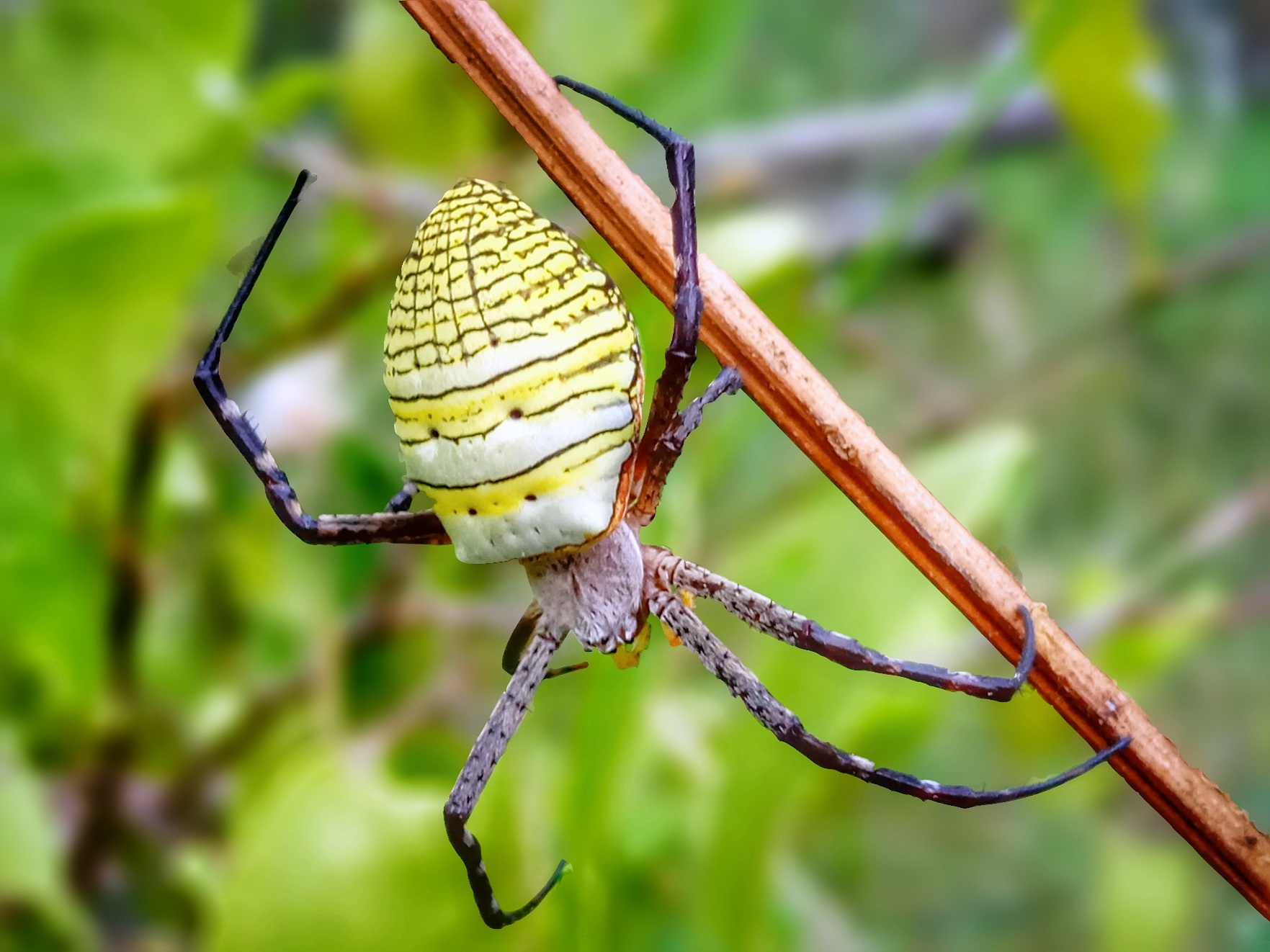
Hi zoology lovers, meet me again, of course, we are still discussing about animals in our own environment. There may be a lot about the zoological groups that inhabit a neighborhood and live with us. That assumption is if we delve deeper into your own environment.
Two days ago, I met a garden spider (as a resident here) on a vacant lot belonging to someone he had abandoned for a long time, in that location many wild plants grew and also the remains of plants that had previously grown (cultivated), but Since covid19 has taken over the world, fertile land has been neglected, or automatically looks erratic or disheveled. The density of wild plant weed species, occupy and continue to grow at one point at random. When greenery and other things thrive, every insect species that likes leaf and flower nectar, as well as small birds, will automatically be present, for the purpose of foraging.
I saw one of the species of anthropods, is building its nest and in the middle of its web there is a dead rhino dragonfly wrapped in its white net, even the story has been written, in a post in the #Hivelearners community about a day ago, today, myself I'm back to seeing development of these spiders, with the aim of knowing their techniques in trapping their prey.
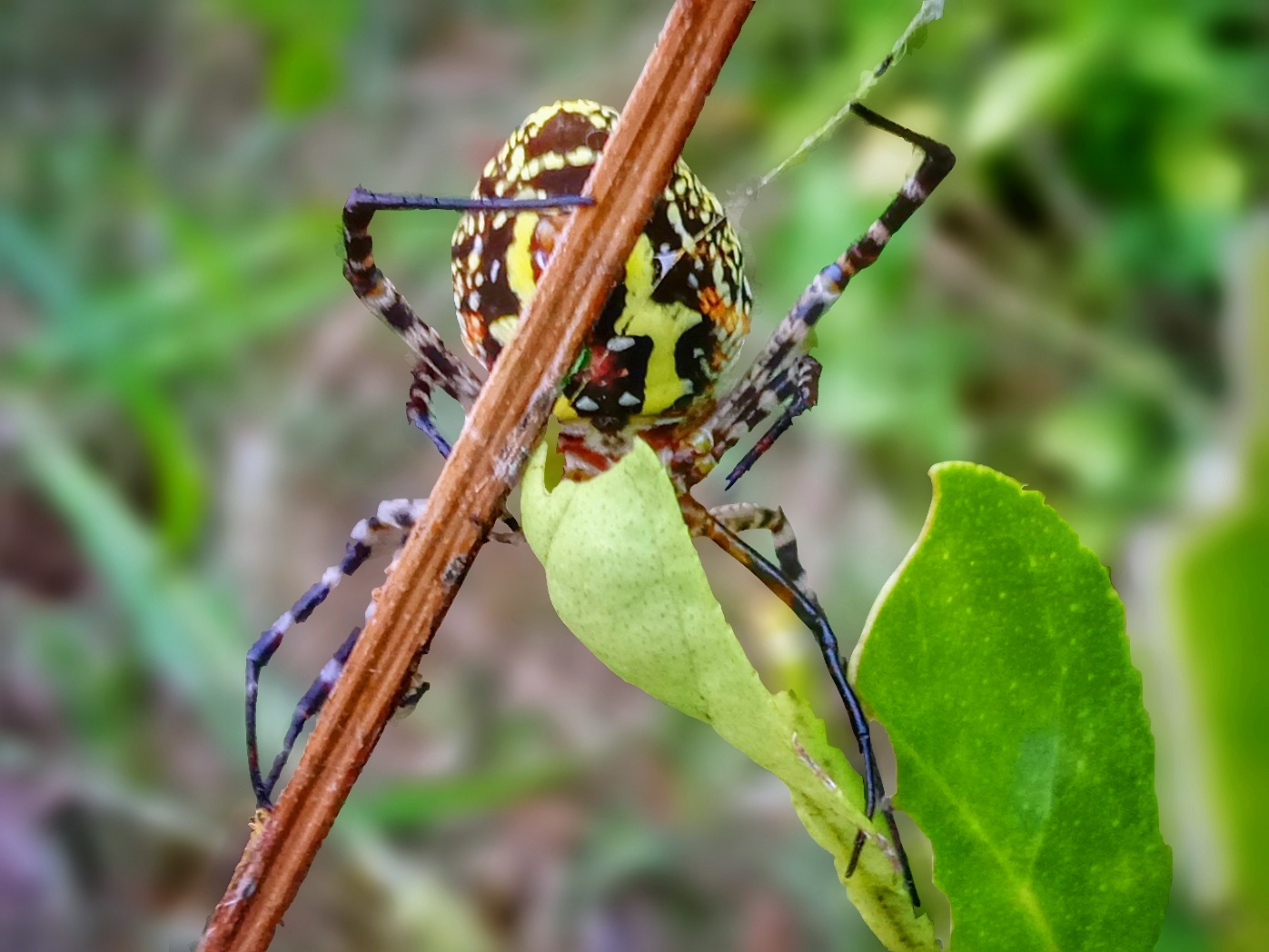
However, very unlucky and this spider has had a hard time, why? Because the beautiful and large nest (net) has been lost or it can be said to have been destroyed by a large object that is running about the nest and will eventually be destroyed.
Now all that's left is him and a dry stick to get back up to build his nest as before. So in this case, I myself witnessed how great this spider mastered and chose a location as the first step to build every day in a habitat.

🪶 Very smart determining the location in trapping prey
Before rebuilding the nest as a place to live or monitor, spiders have seen and predicted strategic locations in regulating the journey of each species, both flying insects and insect species that take a route to reach a destination. Of course the chosen location is on a busy route, meaning every pedestrian or insect traveling on the flight will definitely pass that route.
Why choose a nest location to place the net at the midpoint of the path?
These spiders certainly have predicted, when every homecomer who uses this public route, will automatically be trapped in a web that is not visible to pedestrians (users of the public route), basically assuming that later they will be stuck on a journey. Both users of land routes or users of air routes.
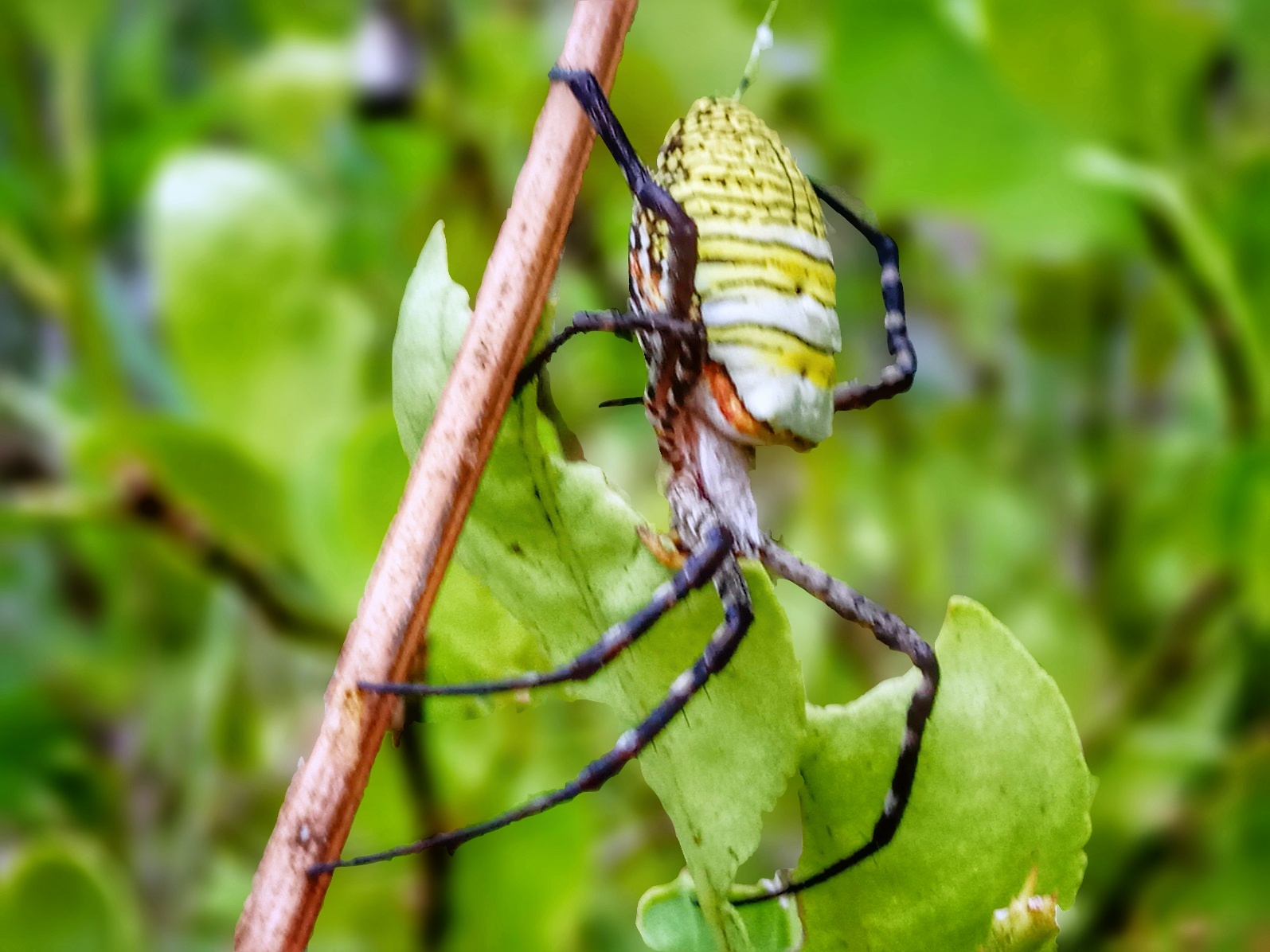
🪶 The size of the net to be made and the conditions of the particular net
When today, meeting him again, this spider is building a new web, as the beginning of creation on dry wood near the kaffir lime plant, but I saw two days ago, a perfectly made web (previously destroyed). While the size is visible, as mentioned below.
| Number | Nest location point | Size per direction |
|---|---|---|
| 1 | The high part, or from the ground level to the top | Has a size of 1.60 cm |
| 2 | From left and right | Reaching a size of 4 meters, it is seen coiled in a circular and chaotic form, which is tied from one plant to another |
| 3 | Creating a wide and beautiful net | Choosing a slender size cannot be measured due to the influence of the shape, but it looks very wide |
| 4 | The bottom direction of the net | From ground level, measures about 20 cm more (suitable for cat travel, and the body does not snag) |
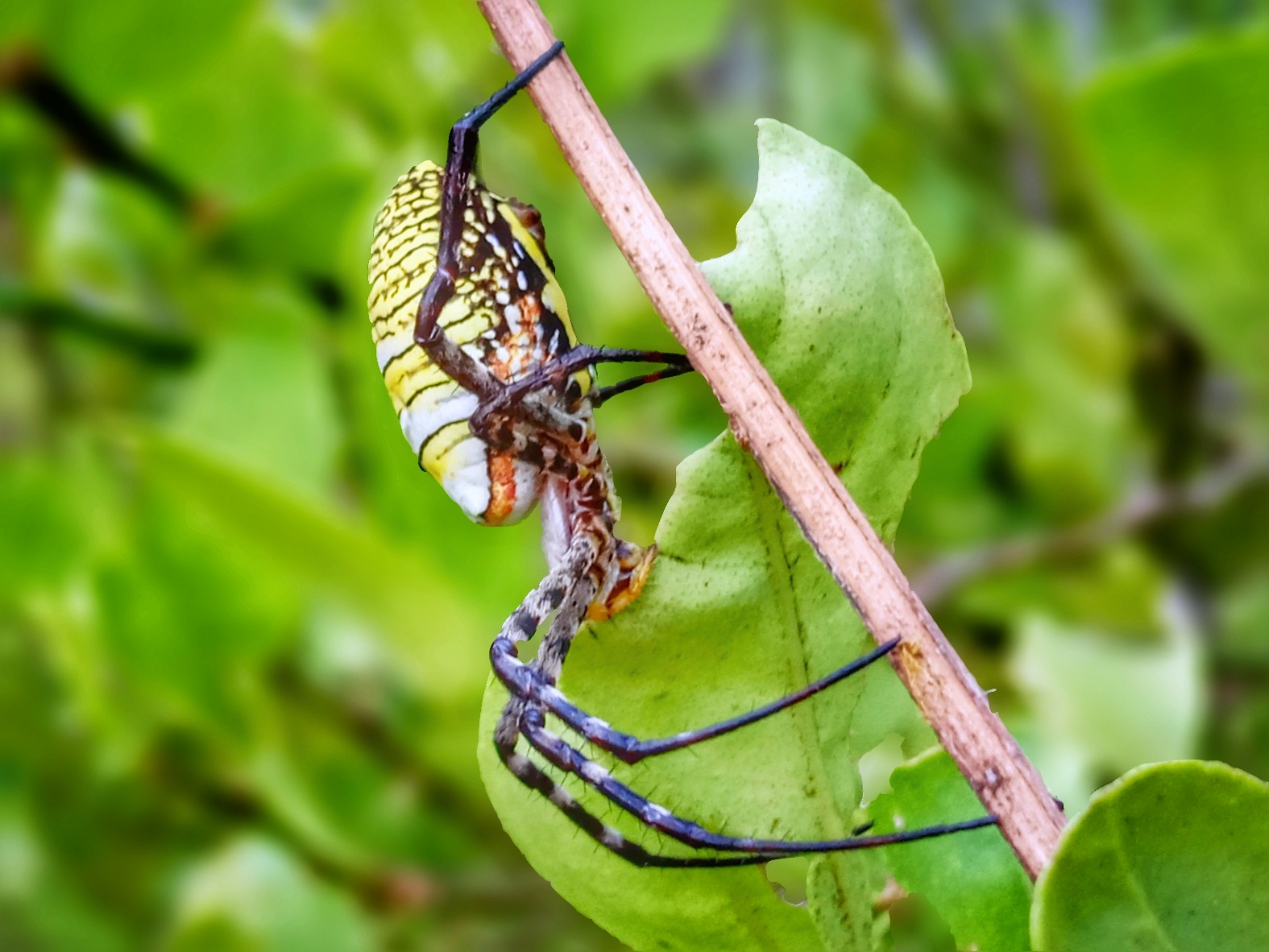
When looking at the location of the nest in a character as well as the position chosen, it can be said that this one spider is very intelligent, and it seems that the calculations are very precise, and precise. It turns out that before spiders build webs in the form of webs, they have already measured everything to trap every inhabitant of the habitat in their daily activities. Then the net also becomes a place to live while monitoring every movement of its prey.
In simple terms it can be said that when the nest is finished tidying and building, it will reap satisfying results in every sleep. It doesn't have to chase its prey like a dragonfly hunts for another insect, which looks like a chase, which takes a lot of energy and time, but it will find its prey while it relaxes in its web.

The purpose of this spider is to build a nest with a height of or less (it has been written in the table above), of course specifically for air walkers, usually especially for dragonflies or other types of flying insects that often take advantage of air travel. Either during flight, or when insects fly, in determining the direction of their journey, or when carrying out a pursuit action against a chosen prey.
This small white net is often hit by pedestrians passing through the air, especially when the sun is hot, of course the vision of every flying insect becomes dazzling, and eventually they will be trapped, and hit a trap net on a journey.
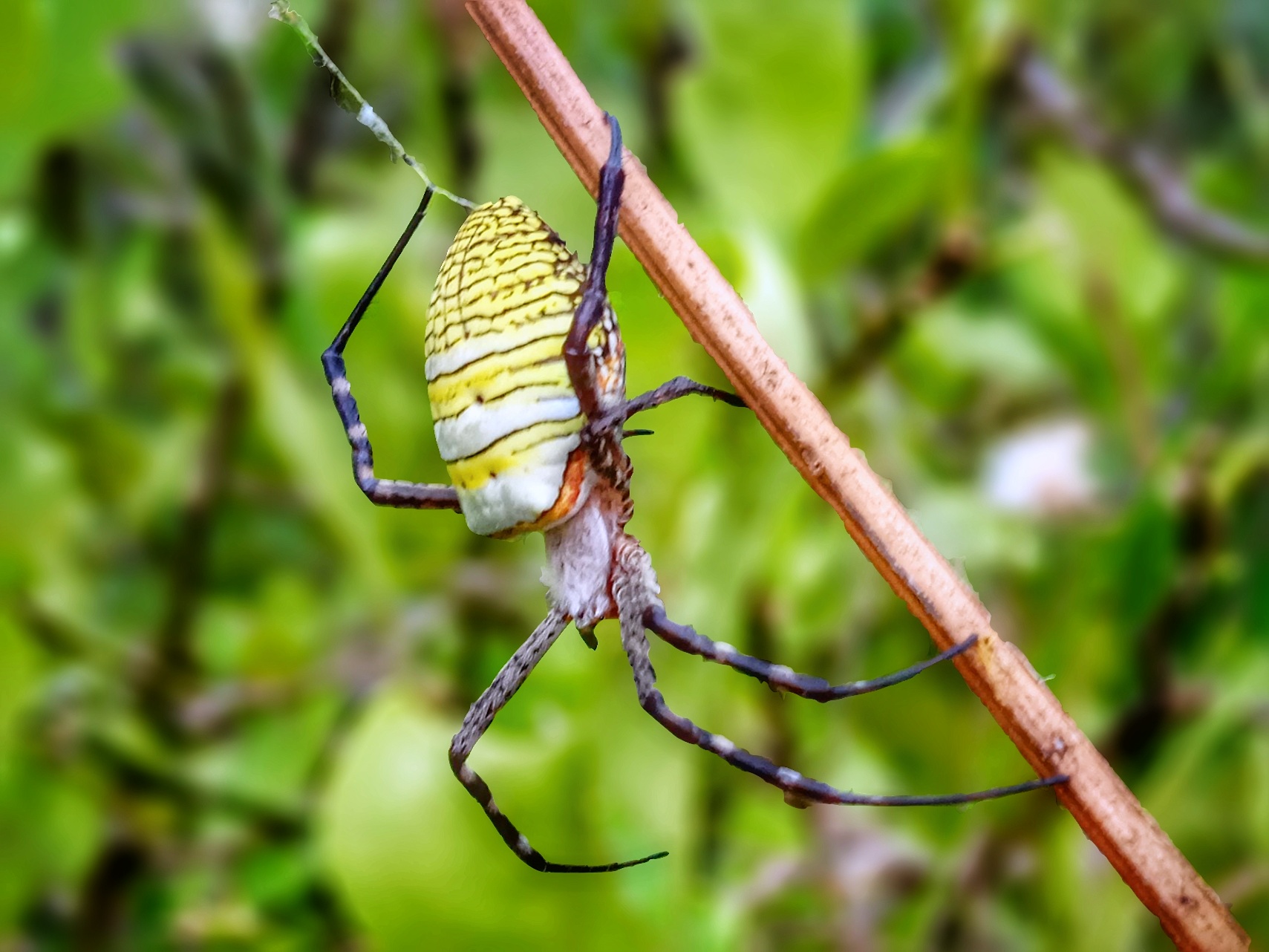
In general, every flying insect, especially dragonflies, will be trapped with their wings, when that happens, the dragonfly or otherwise, will thrash around while freeing itself, so here is an error, it turns out that spider webs will not be broken, with a relative nature. The more it moves, the more it will be wrapped in the net.
If you have ever seen a dragonfly stuck in a cobweb road, of course you will remember a behavior, when humans are trapped in living mud, when humans struggle to free themselves, then the mud will automatically continue to swallow the burden of life. This is caused by the activity of wrestling (freeing oneself).
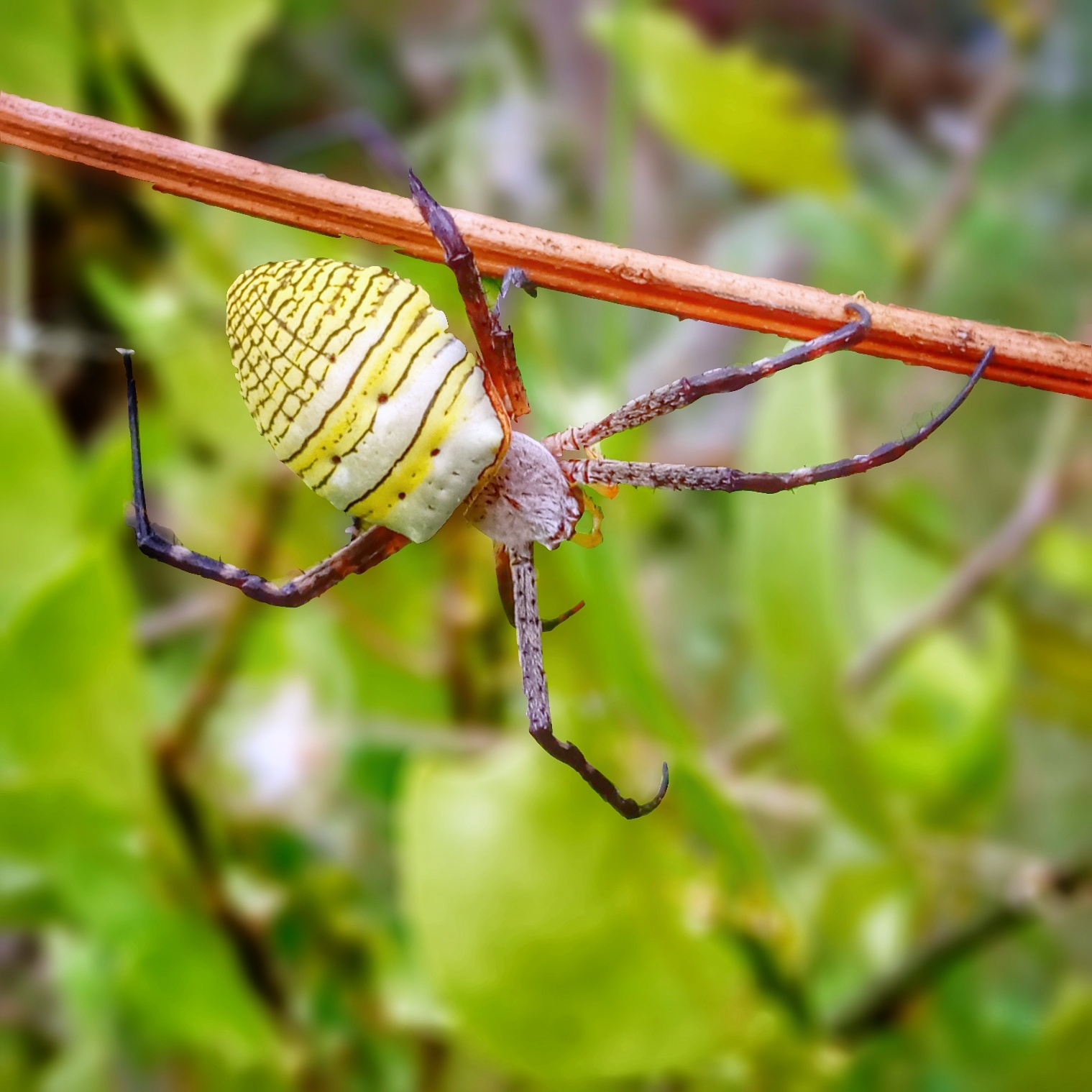
When the dragonfly's wings are increasingly wrapped in a relative web form, then within a certain time the spider will come to it and will continue to wrap it with another web that comes from its mouth, then gradually the dragonfly will die. Then within a certain time, the dragonfly's body will harden, of course there is a good liquid for spiders to suck. Spiders do not eat body parts as a whole, because the spider itself does not have teeth or a mouth like meat-eating animals, which always consume any flesh of prey. The spider only sucks the liquid that is on the victim's body.

What about pedestrians, who use common paths, to cross from one plant to another when migrating locally within one habitat. The chronology is similar to the behavior of flying insects trapped in each flight. However, when a walking insect is trapped and snagged, it cannot move forward or backward due to the influence of the fine hairs on its legs, so the fine hairs will continue to stick to the web with an inherent nature and will not come off, very little power.

There's a lot more, I have to explain about a character about the net, of course it's a threat to every species of insect, be it flying insects or insects that walk from plant to plant, those who use land routes.
Will continue in the next post...
You Can See Mee In 



About Author
Krue Seumangat!
Welcome to this simple blog. The author is a full-fledged nature lover, in his spare time likes to write, read and always likes something new, wants an innovation. Passion invites people to always learn. Likes to explore hidden things, and always wants to get ahead. Always upvote and provide suggestions to advance this author.
If you liked the content, don't forget to upvote and leave a comment below. Always want to do good. Thanks very much :)


The rewards earned on this comment will go directly to the person sharing the post on Twitter as long as they are registered with @poshtoken. Sign up at https://hiveposh.com.
This is great! Thank your for sharing this gorgeous Argiope sp. spider and your observations on her behaviour. It's unfortunately a common risk for orb-weavers, because their webs are so large, that a larger animal walks through it and tears it down. Luckily, she has eaten enough that she can spin a whole new web. Interestingly, a lot of spiders do actually have teeth and mouth but not the kind we do. There are also several spider species who eat the whole insect, usually the bigger spiders like tarantulas.
I'd like to invite you to join our Arachnids community and share your arachnid content in cross-posts with us.
Hello @hive-100750, you are very smart in describing a discovery, and your kind comments make me worth inspiring going forward, thank you for inviting me to join the Arachnids community, and I will follow that invitation, thank you very much for visiting my blog, success always for you...
Spider science can work up an appetite and !PIZZA is always good for hitting that hunger. Thank you for sharing! This is the type of arachnid post that HIVE needs more of.
Hello @anikekristen, you are very kind, and your comments make me even more motivated to write on hive.blog. Thank you for visiting, success always, and have a nice day
PIZZA Holders sent $PIZZA tips in this post's comments:
(2/10) @anikekirsten tipped @soehada (x1)
You can now send $PIZZA tips in Discord via tip.cc!
Thank you so much @pizzabot
We appreciate your work and your post has been manually curated by zoology team (oscurity,nelinoeva) on behalf of Amazing Nature Community. Keep up the good work!
we lovee this photos and information!
Thank you so much @hive-127788, for supporting me
continue with your good work is a very complete post!
We appreciate your work and your post was manually curated by @none! from the DNA team!
Reach us on Discord to learn more about the project!
Hello @soehada!Thank you so much @dna and qurator @none, for supporting me